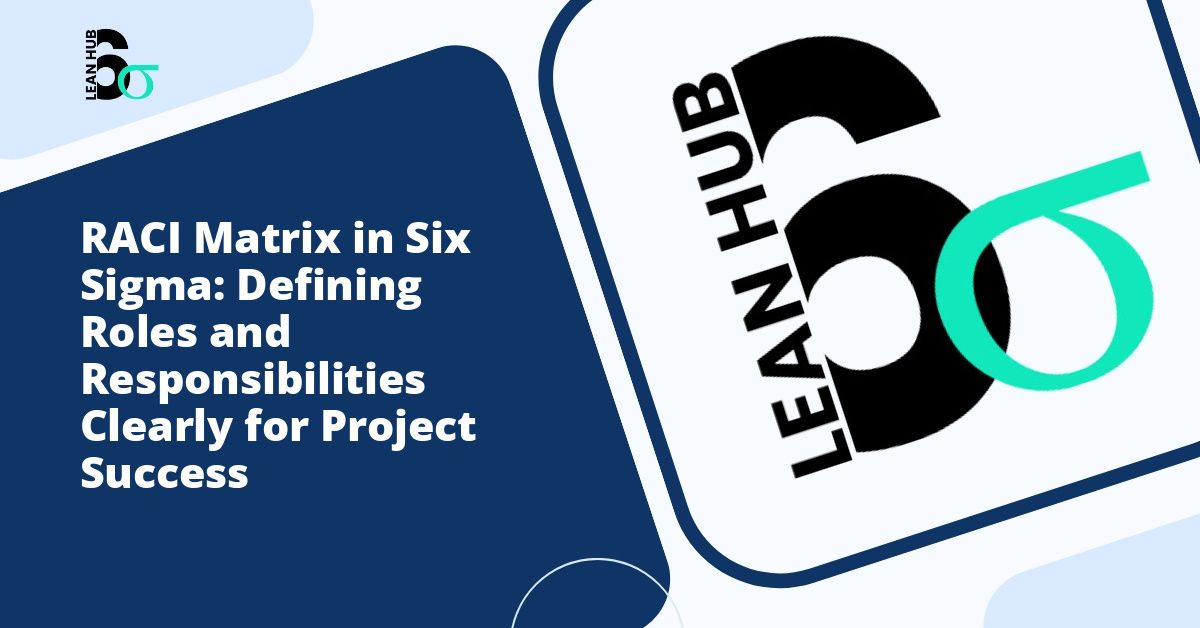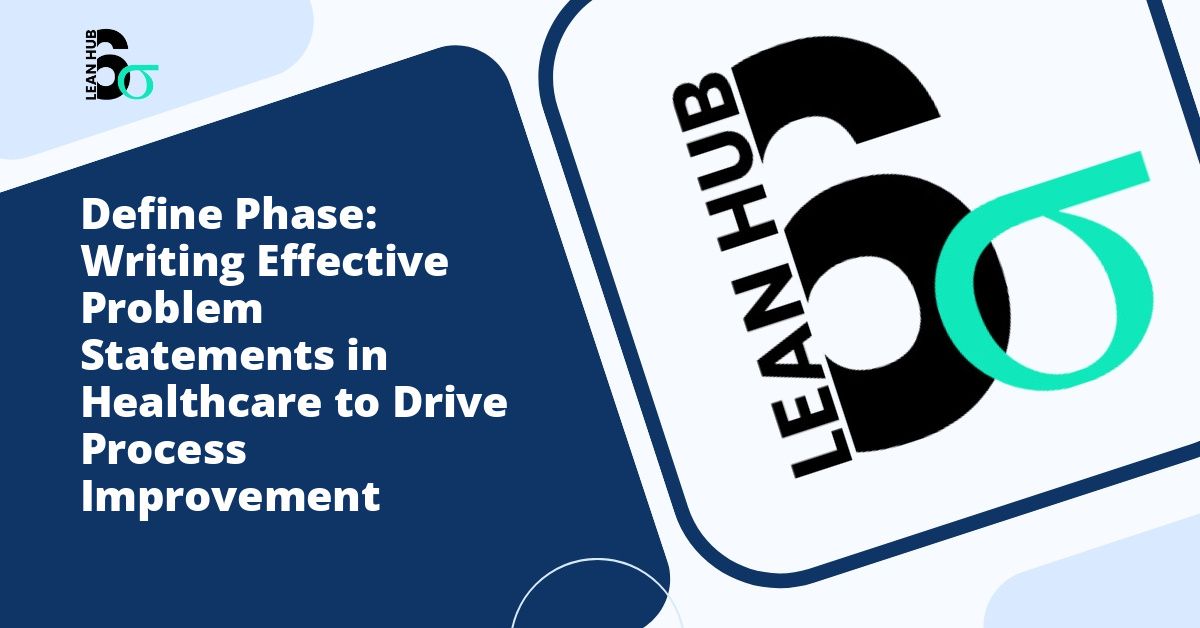In the world of process improvement and project management, clarity in roles and responsibilities can make the difference between success and failure. When organizations implement lean six sigma methodologies, one of the most common challenges they face is confusion about who does what, when, and how. This is where the RACI matrix becomes an invaluable tool, providing a clear framework for defining and communicating responsibilities across teams and stakeholders.
Understanding the RACI Matrix
The RACI matrix is a responsibility assignment matrix that clarifies the roles of team members and stakeholders in project activities and decision-making processes. The acronym RACI stands for four key responsibility types: Responsible, Accountable, Consulted, and Informed. This simple yet powerful tool ensures that every task, deliverable, or decision point has clearly defined ownership and involvement levels. You might also enjoy reading about How Long Should the Define Phase Take? A Complete Timeline and Planning Guide.
Within the context of lean six sigma projects, the RACI matrix serves as a communication tool that eliminates ambiguity and prevents common pitfalls such as duplicated efforts, missed tasks, or decision-making bottlenecks. By implementing this matrix during the project planning phase, teams can establish a solid foundation for efficient collaboration and accountability. You might also enjoy reading about Lean Six Sigma Define Phase: The Complete Guide for 2025.
Breaking Down the RACI Components
Responsible (R)
The “Responsible” designation refers to the person or people who actually perform the work to complete a task or deliverable. These individuals are the doers who execute the activities required to achieve project objectives. In a lean six sigma project, multiple people can share the Responsible role for a single task, though it is generally advisable to keep this number manageable to maintain efficiency. You might also enjoy reading about Project Charter Checklist: 12 Essential Elements Every Six Sigma Project Needs for Success.
For example, in a process improvement initiative, data analysts might be Responsible for collecting and analyzing performance metrics, while process engineers might be Responsible for implementing recommended changes.
Accountable (A)
The “Accountable” party is the person who has ultimate ownership and authority over the task or deliverable. This individual ensures that the work gets completed correctly and on time. A critical rule of the RACI matrix is that there should be only one Accountable person per task to avoid confusion about final decision-making authority.
In six sigma projects, the Black Belt or Green Belt leading the initiative often holds the Accountable role for major deliverables, ensuring that the project stays aligned with organizational goals and quality standards.
Consulted (C)
Those who are “Consulted” are subject matter experts or stakeholders whose input and feedback are sought before decisions are finalized or work is completed. This represents two-way communication, where the Responsible and Accountable parties actively seek advice and expertise from these individuals.
During a lean six sigma project, process owners, technical specialists, and experienced team members often fill Consulted roles, providing valuable insights that inform better decision-making and more effective solutions.
Informed (I)
The “Informed” designation includes stakeholders who need to be kept updated on progress and decisions but are not directly involved in executing the work or providing input. This is one-way communication, ensuring that relevant parties stay aware of project developments without requiring their active participation.
Senior management, affected departments, and peripheral stakeholders typically hold Informed roles, receiving regular updates without being bogged down in day-to-day project activities.
The RACI Matrix in the Lean Six Sigma Framework
The lean six sigma methodology follows a structured approach to process improvement, most commonly using the DMAIC framework: Define, Measure, Analyze, Improve, and Control. Some organizations also include a preliminary recognize phase where problems and opportunities are first identified. The RACI matrix proves invaluable throughout each of these phases.
Recognize Phase Implementation
In organizations that incorporate a recognize phase before formal DMAIC projects begin, the RACI matrix helps clarify who identifies potential improvement opportunities, who evaluates their merit, and who decides which projects to pursue. This early clarity prevents good ideas from falling through the cracks and ensures that the right stakeholders have input into project selection.
During the recognize phase, department managers might be Responsible for identifying inefficiencies, process owners might be Consulted about feasibility, the quality director might be Accountable for prioritizing opportunities, and executive leadership might be Informed about potential projects.
Define Phase Clarity
During the Define phase of a six sigma project, teams establish project charters, identify stakeholders, and clarify objectives. Creating a RACI matrix at this stage ensures that everyone understands their role from the outset. The project champion is typically Accountable for approving the project scope, the Black Belt or Green Belt is Responsible for developing the project charter, key stakeholders are Consulted about project boundaries, and affected departments are Informed about upcoming improvement efforts.
Measure, Analyze, and Improve Phases
As projects progress through the technical phases of measurement, analysis, and improvement, the RACI matrix continues to provide clarity. Data collection activities, analysis methods, and solution implementation all benefit from clearly defined roles. This clarity becomes especially critical when cross-functional teams must collaborate, as is often the case in lean six sigma initiatives.
Control Phase Sustainability
In the Control phase, where improvements are standardized and monitoring systems are established, the RACI matrix helps define ongoing responsibilities for sustaining gains. This ensures that improvements do not erode over time due to unclear ownership of new processes and monitoring activities.
Creating an Effective RACI Matrix
Developing a RACI matrix requires thoughtful consideration and collaboration. Begin by listing all project tasks, deliverables, and decision points in rows of a matrix. Then list all team members, stakeholders, and relevant parties in columns. At each intersection, assign the appropriate RACI designation.
Best practices for creating your RACI matrix include:
- Involve key stakeholders in the creation process to gain buy-in and ensure accuracy
- Start with major deliverables before drilling down into detailed tasks
- Limit the number of people assigned to each task to avoid diffusion of responsibility
- Ensure every task has exactly one Accountable party
- Avoid assigning too many Consulted roles, which can slow decision-making
- Review and update the matrix as the project evolves
- Communicate the final matrix clearly to all involved parties
Common Pitfalls and How to Avoid Them
Even with good intentions, teams can fall into several traps when implementing RACI matrices. One common mistake is assigning multiple Accountable parties to a single task, which creates confusion about who has final decision-making authority. Another pitfall is over-consulting, where too many people have Consulted roles, leading to analysis paralysis and delayed progress.
Some teams also fail to distinguish between Responsible and Accountable roles, assigning both designations to the same person for every task. While one person can hold both roles, this approach misses the opportunity to delegate work effectively while maintaining oversight.
To avoid these issues, regularly review your RACI matrix with team members, ask for feedback about clarity and workability, and be willing to adjust assignments based on practical experience. The matrix should serve the team, not constrain it.
Benefits of Using RACI in Lean Six Sigma Projects
When properly implemented, the RACI matrix delivers numerous benefits to lean six sigma initiatives. It reduces confusion and conflict by establishing clear expectations upfront. It improves efficiency by ensuring tasks have clear owners and preventing work from falling through the cracks. It enhances communication by identifying who needs to be involved at what level for each activity.
Furthermore, the RACI matrix supports accountability, making it easier to track progress and address performance issues. It also facilitates better resource allocation by providing visibility into workload distribution across team members. For organizations committed to continuous improvement, these benefits translate directly into more successful project outcomes and greater return on investment from lean six sigma initiatives.
Conclusion
The RACI matrix represents a simple yet powerful tool for bringing clarity to complex lean six sigma projects. By clearly defining who is Responsible, Accountable, Consulted, and Informed for each task and deliverable, organizations can eliminate confusion, improve collaboration, and increase project success rates. Whether applied during the recognize phase of opportunity identification or throughout the DMAIC cycle, the RACI matrix provides a framework for effective teamwork and clear communication. As you embark on your next process improvement initiative, consider investing time upfront to develop a comprehensive RACI matrix. The clarity it provides will pay dividends throughout the project lifecycle and beyond.








